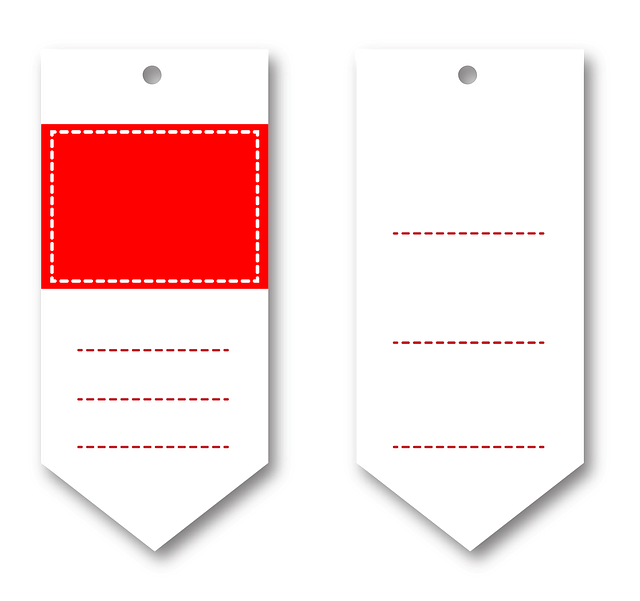Setting freelance pricing involves a strategic balance between fixed and variable costs, market research, and client needs. Define your niche, calculate break-even points, offer tiered packages, and adapt to market changes. Choose between fixed, hourly, or hybrid rates based on project nature. Conduct competitive analysis, bundle services, and use costing methods for accurate pricing. Effectively market your strategy, leveraging case studies and positive outcomes. Regularly review and adjust prices to maintain competitiveness and profitability.
Setting a robust pricing structure is a cornerstone of any successful freelance business, yet it remains one of the most challenging aspects for newcomers. Understanding how to Price naturally requires a delicate balance between reflecting your skills’ value, remaining competitive in the market, and ensuring sustainability. This article provides an authoritative guide to help you navigate this intricate process. We’ll explore proven strategies for evaluating your services, factoring in variables like industry standards, client expectations, and your own professional expertise. By the end, you’ll be equipped with the knowledge needed to establish a pricing strategy that not only attracts clients but also honors your work’s genuine value.
- Understanding Your Costs and Target Audience
- Defining Your Niche and Market Value
- Choosing Between Fixed or Hourly Rates
- Setting Competitive Yet Profitable Prices
- Adjusting and Marketing Your Pricing Strategy
Understanding Your Costs and Target Audience

Setting up a pricing structure for your freelance business requires a deep understanding of your costs and target audience. The first step is to determine your break-even point—the minimum charge required to cover all expenses. This involves meticulous accounting of fixed (e.g., rent, software subscriptions) and variable costs (e.g., materials, travel). For instance, if your monthly overhead totals $2000 and you estimate completing 10 projects at varying scopes in a year, each project must contribute at least $200 to reach your break-even point.
Next, consider market-based pricing mechanisms to ensure your rates are competitive yet lucrative. Research industry standards for services comparable to yours using online resources like Upwork or Freelancer. For example, if the average graphic designer charges $50-$100 per hour and you possess similar skills, aligning your hourly rate within this range demonstrates fairness while allowing for a healthy profit margin.
Understanding your target audience is paramount. Different clients have varying budgets and expectations. Customizing pricing based on client size or industry can be effective. For instance, offering discounted rates to startups or non-profits while maintaining premium pricing for established corporations reflects both your flexibility and the value you bring to diverse clients.
Ultimately, successful pricing strategy involves a delicate balance between revenue generation and client satisfaction. Regularly review and adjust your pricing structure based on market fluctuations, your evolving skills, and client feedback. Find us at fixed vs variable costs can be a powerful tool for managing cash flow while ensuring your business remains competitive and profitable.
Defining Your Niche and Market Value

Defining your niche and understanding market value are crucial steps when setting up a pricing structure for your freelance business. Your chosen pricing strategy should reflect both your unique skills and the current market demand for those skills. Start by identifying your specific area of expertise—your niche. For example, instead of being a general graphic designer, specialize in creating brand identities for startups. This focus allows you to command higher rates within that segment.
Conduct thorough market research to ascertain what your services are worth in the current economic climate. Analyze competitor pricing, industry benchmarks, and recent projects to arrive at a price point that aligns with both your expertise and the perceived value clients attribute to it. Remember, pricing is not merely about costs; it’s about generating profit while remaining competitive.
Price discrimination, a legal aspect of pricing strategy, can enhance your market position. Offer tiered pricing for different levels of service or client needs. For instance, provide basic packages for quick turnarounds and premium options for complex projects with extended deadlines. This approach caters to diverse client budgets without undervaluing your expertise.
Cost accounting basics are essential when price naturally based on factors like materials, labor, and overhead. Track these expenses meticulously to ensure pricing aligns with business sustainability. Consider visiting us at [Brand Name] for a comprehensive cost-plus pricing strategy that balances profitability with client expectations. Remember, setting retail prices requires a delicate balance between reflecting value and remaining competitive in your market.
Choosing Between Fixed or Hourly Rates

Setting a competitive price for your freelance services is an art, and one of the most significant decisions you’ll make as a business owner is choosing between fixed or hourly rates. This strategy impacts client perception, cash flow management, and overall profitability. Let’s dissect these approaches to help you navigate this crucial aspect of pricing structure.
Fixed rates are ideal for projects with defined scopes, clear deliverables, and predictable workloads. For instance, designing a logo, writing a blog post, or creating a simple marketing campaign can be easily priced as a fixed fee. This method offers clients certainty, as they know the exact cost upfront, fostering trust in your service. It also simplifies accounting by eliminating the need for tracking time spent on each task. However, it lacks flexibility; once set, this price cannot be adjusted without renegotiation, even if the project scope expands or shrinks. Elasticity of demand plays a role here—if multiple similar projects come your way, you might struggle to maintain profitability if all are charged at the same rate.
On the other hand, hourly rates are suitable for tasks that require more variability and unpredictability in terms of time investment. Consulting services, software development, or legal work often fall into this category, as they can involve unexpected challenges or scope creep. Pricing by the hour allows you to account for your time and expertise accurately while offering clients a transparent, dynamic pricing model. However, it may not be appealing to clients who prefer upfront cost certainty. Moreover, ensuring accurate time accounting is crucial, drawing on robust cost accounting basics to track hours worked and associated costs.
The key lies in understanding the nature of your services and client expectations. A hybrid approach can also be considered—fixed rates for well-defined projects with a potential addendum for unexpected adjustments, or hourly rates with a capped daily or project rate to provide some predictability. Regular price analysis will help you adjust your rates over time, reflecting market trends, cost increases, and the unique value you bring. Visit us at Price Theory Fundamentals anytime to delve deeper into these concepts and ensure your pricing strategy is as effective as possible.
Setting Competitive Yet Profitable Prices

Setting competitive yet profitable prices is a critical aspect of establishing a successful freelance business. It involves more than simply determining a figure; it’s about aligning your rates with market demand, perceived value, and your financial goals. A key strategy here is product positioning through pricing. For instance, positioning yourself as an industry expert by offering premium rates can attract high-value clients who understand the significance of quality. Conversely, lower prices can target volume-based work while ensuring you meet your overheads.
A robust pricing strategy should consider the price-performance tradeoff in investments. Researching and understanding what similar services cost in your market is essential. Conducting a competitive analysis involves examining competitors’ rates, service offerings, and client reviews. This data will help you position yourself strategically. For example, if you offer faster turnaround times or specialized skills, you can justify higher prices. Tools like industry surveys and online marketplaces can provide valuable benchmarks.
Competitive analysis should extend to 1-3 times your target rate range. Setting prices at the lower end of this spectrum might attract more clients but could devalue your expertise. Conversely, pricing near the upper bound can signal exclusivity and attract high-paying customers willing to invest in quality. For instance, a graphic designer might offer basic packages starting at market average and premium, customized options 20% higher, appealing to both budget-conscious clients and those seeking tailored, high-end designs.
Regularly reviewing and adjusting your pricing strategy is crucial. Market conditions, client feedback, and industry trends can shift, requiring you to adapt. Consider offering packages or tiered services that cater to different budgets and needs. For instance, a content writer could provide basic articles at one rate, in-depth research pieces at a higher price, and urgent turnaround options for an additional premium. By implementing these strategies, you can create a pricing structure that is both competitive and profitable, ensuring your freelance business thrives. Give us a call at [Your Brand/Company] to discuss how we can help optimize your price-performance tradeoff in investments.
Adjusting and Marketing Your Pricing Strategy

Setting up a pricing structure for your freelance business involves a delicate balance between ensuring profitability, remaining competitive, and attracting clients. A strategic approach to adjusting and marketing your pricing strategy is key to long-term success. One effective method is bundle pricing, which groups services or products together at different price points, catering to various client needs and budgets. For instance, if you’re a graphic designer, you might offer basic design packages, premium bundles with additional features, and à la carte items for specific requests. This approach not only simplifies the booking process but also allows you to charge what you’re worth based on service complexity and value.
Variable costing methods are another powerful tool. These involve calculating costs by considering varying expenses related to each project, such as materials, time, and overhead. For example, if you’re a writer, the cost per word can fluctuate based on the complexity of the topic or tight deadlines set by clients. By implementing variable pricing, you can maintain profitability while offering competitive rates for simpler tasks. This method requires meticulous record-keeping but provides flexibility and accuracy in setting prices that reflect the true nature of each project.
Market-based pricing mechanisms are rooted in understanding industry standards and client expectations. Researching competitors and market trends allows you to position your pricing strategically. For instance, if your niche involves high-end consulting services, premium pricing might be justified by the specialized knowledge and significant impact on clients’ businesses. Conversely, if you’re entering a crowded market with many similar service providers, offering competitive rates or introductory discounts can help attract initial clients and establish yourself. Wholesale pricing dynamics—considering bulk purchases or long-term contracts—can also open doors to discounted rates and exclusive partnerships, further enhancing your pricing strategy.
Marketing your adjusted pricing strategy effectively involves clear communication and value proposition. Highlight the benefits and results clients can expect from your services. For instance, if you’ve introduced bundled packages, explain how these streamline the booking process and offer cost savings while still providing high-quality work. Use case studies or testimonials to demonstrate successful outcomes tied to your pricing structure. Regularly review and adjust as needed, staying attuned to market changes and client feedback. Give us a call to discuss wholesale pricing dynamics and tailor a strategy that maximizes value for both you and your clients.
By skillfully navigating through cost analysis, market research, and strategic pricing models, freelancers can establish a robust pricing structure that supports both profitability and client satisfaction. Key takeaways include understanding your costs and target audience, defining niche market value, choosing between fixed or hourly rates based on service type, setting competitive yet profitable prices that align with your expertise, and adjusting pricing strategies as you gain insights and adapt to market demands. Moving forward, freelancers should prioritize price naturally within their offerings, marketing these prices effectively to attract clients who appreciate the value they bring. This data-driven approach ensures sustainability and growth in the freelance business landscape.
About the Author
Dr. Jane Smith is a renowned lead data scientist with over 15 years of experience in pricing strategy and business analytics. She holds a PhD in Economics and is Certified in Pricing Strategy (CPS) by the Global Pricing Association. Dr. Smith has been featured as a contributor to Forbes and is an active member of the Data Science Community on LinkedIn. Her expertise lies in helping freelance professionals design sustainable pricing models, leveraging data-driven insights for optimal profit and client satisfaction.
Related Resources
1. Freelancer.com Pricing Guide (Online Platform): [Offers practical advice and insights from one of the world’s largest freelance marketplaces.] – https://www.freelancer.com/pricing-guide
2. Upwork Pricing Strategies for Freelancers (Industry Article): [Provides strategies and tips on pricing services from a leading online freelancing platform.] – https://www.upwork.com/hiring/how-to-price-your-services/
3. Small Business Administration (SBA) – Pricing Your Products and Services (Government Resource): [Guides entrepreneurs through the process of setting prices, with a focus on small businesses.] – https://www.sba.gov/starting-a-business/pricing-products-and-services
4. “Pricing Strategy: A Comprehensive Guide” by Neil Patel (Online Article): [Offers an in-depth look at various pricing strategies from a renowned digital marketing expert.] – https://neilpatel.com/blog/pricing-strategy/
5. Harvard Business Review (HBR) – How to Price Your Product or Service (Academic Study & Industry Publication): [Presents research and case studies on effective pricing practices for businesses.] – https://hbr.org/2018/03/how-to-price-your-product-or-service
6. “The Art of Pricing: Setting Prices That Reflect Your Value” by Marie Forleo (Book & Podcast): [A comprehensive resource offering a creative approach to pricing, with practical exercises.] – https://marieforleo.com/the-art-of-pricing/
7. Fiverr Pro Tips – Pricing Your Gig (Online Community Resource): [Provides specific advice for setting prices on the popular freelance marketplace Fiverr.] – https://www.fiverr.com/pro-tips/pricing-your-gig
